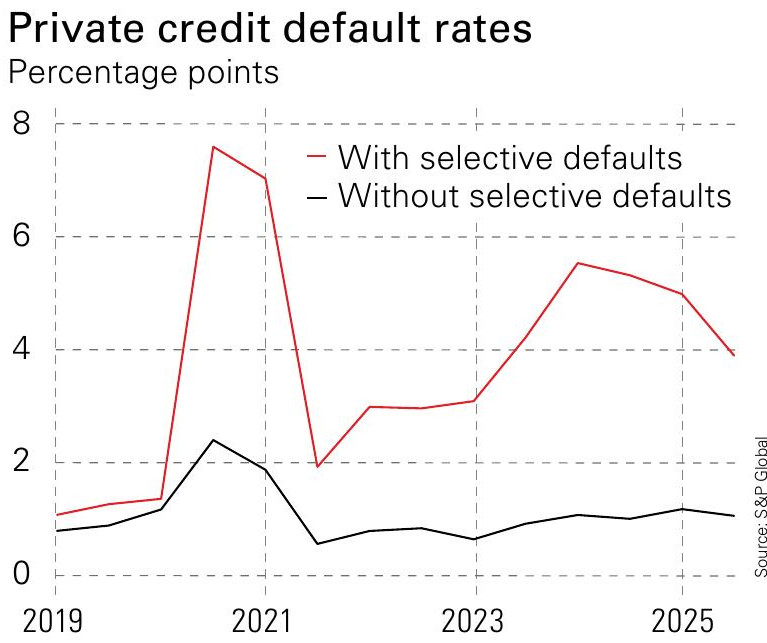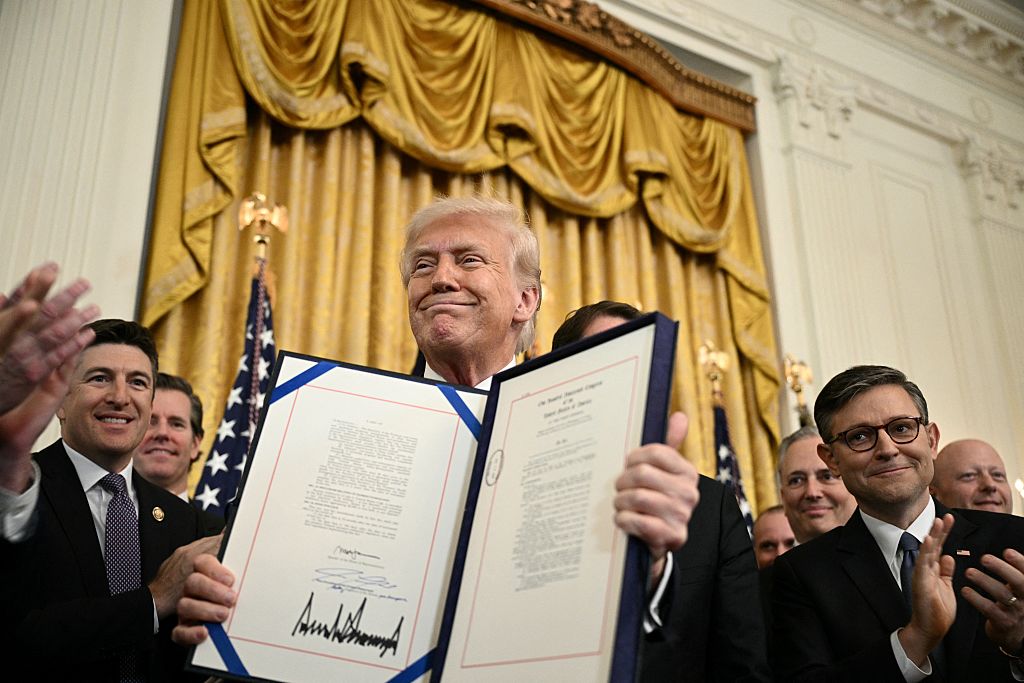A strange calm in credit
Corporate bond markets remain remarkably relaxed, with yields that offer little compensation for risks


Investors are nervous. There are few other ways to read the latest gains in gold – above $3,650 per ounce for the first time this week – or the big moves in long-dated government bonds. Yet some markets look remarkably unperturbed.
Take credit spreads – the gap between the yield on government bonds and corporate debt – which tend to blow out at times of stress.
Spreads for US investment-grade bonds are instead at their tightest since 1998, barely 0.8 percentage points (pp) above the yield on comparable Treasuries. Eurozone investment grade bonds are similar; they have been tighter at times (eg, 2007 and 2018), but remain very low. Spreads for non-investment grade bonds (known as high-yield) are around 2.9pp, a bit higher than they were earlier this year in both the US and European markets. But they are still right at the bottom of their long-term range, and below the 4%-plus area they hit in April – which was not itself exceptionally high.
MoneyWeek
Subscribe to MoneyWeek today and get your first six magazine issues absolutely FREE

Sign up to Money Morning
Don't miss the latest investment and personal finances news, market analysis, plus money-saving tips with our free twice-daily newsletter
Don't miss the latest investment and personal finances news, market analysis, plus money-saving tips with our free twice-daily newsletter
The growth of private credit
One theory holds that spreads are tight because government bonds are getting riskier and no longer offer a real “risk-free rate” to benchmark corporate bonds against. Some argue that top-grade corporate credit could trade on lower yields than governments (the spread on US AAA-rated bonds is around 0.3pp).
This feels like a stretch. The most likely escape route for governments is to have central banks buy bonds at low yields – a precedent set under quantitative easing. That is probably inflationary and inflation will hurt low-yield corporate bonds. If you expect this, you should demand higher yields, not settle for less.
Another argument with high yield, in particular, is that the corporate bond universe is of higher quality now. The growth of private credit – the hottest area in alternative assets over the past few years – means that lower-quality borrowers have migrated there to get more favourable terms. That has left the better borrowers in bonds. There is probably some truth in this, but spreads still look so tight that they don’t provide much compensation for risk.

Of course, tight spreads also explain why higher yields in private credit have proved so attractive. The challenge with private credit is that it is by definition less public, so it’s harder to have a clear picture of the market and how much risk investors are taking to earn, say, 200pp more yield from something much less liquid.
On the face of it, default rates remain low – around 1% according to a recent paper by ratings agency S&P Global. But this relies on a narrow definition of default and ignores selective defaults, such as converting cash interest into more debt, repayment holidays or extending debt maturities. Include those and defaults have been much higher, says S&P, despite the benign environment. Data from other analysts paints a similar picture. One has to figure there will be a reckoning here when the cycle turns, making low credit spreads in bonds a dangerous reason to reach further for higher yields in private credit.
This article was first published in MoneyWeek's magazine. Enjoy exclusive early access to news, opinion and analysis from our team of financial experts with a MoneyWeek subscription.
Get the latest financial news, insights and expert analysis from our award-winning MoneyWeek team, to help you understand what really matters when it comes to your finances.
Cris Sholto Heaton is an investment analyst and writer who has been contributing to MoneyWeek since 2006 and was managing editor of the magazine between 2016 and 2018. He is especially interested in international investing, believing many investors still focus too much on their home markets and that it pays to take advantage of all the opportunities the world offers. He often writes about Asian equities, international income and global asset allocation.
Cris began his career in financial services consultancy at PwC and Lane Clark & Peacock, before an abrupt change of direction into oil, gas and energy at Petroleum Economist and Platts and subsequently into investment research and writing. In addition to his articles for MoneyWeek, he also works with a number of asset managers, consultancies and financial information providers.
He holds the Chartered Financial Analyst designation and the Investment Management Certificate, as well as degrees in finance and mathematics. He has also studied acting, film-making and photography, and strongly suspects that an awareness of what makes a compelling story is just as important for understanding markets as any amount of qualifications.
-
 Boost for over 100,000 families on Child Benefit as new HMRC payment system rolled out
Boost for over 100,000 families on Child Benefit as new HMRC payment system rolled outThousands of households will no longer have to pay the dreaded High Income Child Benefit Charge through self-assessment
-
 Are you being haunted by the ghost of Christmas past? How festive cutbacks could boost your long-term wealth
Are you being haunted by the ghost of Christmas past? How festive cutbacks could boost your long-term wealthThe average family spends around £1,000 over the Christmas season. Here’s how much you could have gained if you had invested some of the money instead.
-
 Stock markets have a mountain to climb: opt for resilience, growth and value
Stock markets have a mountain to climb: opt for resilience, growth and valueOpinion Julian Wheeler, partner and US equity specialist, Shard Capital, highlights three US stocks where he would put his money
-
 The steady rise of stablecoins
The steady rise of stablecoinsInnovations in cryptocurrency have created stablecoins, a new form of money. Trump is an enthusiastic supporter, but its benefits are not yet clear
-
 SRT Marine Systems: A leader in marine technology
SRT Marine Systems: A leader in marine technologySRT Marine Systems is thriving and has a bulging order book, says Dr Michael Tubbs
-
 Goodwin: A superlative British manufacturer to buy now
Goodwin: A superlative British manufacturer to buy nowVeteran engineering group Goodwin has created a new profit engine. But following its tremendous run, can investors still afford the shares?
-
 A change in leadership: Is US stock market exceptionalism over?
A change in leadership: Is US stock market exceptionalism over?US stocks trailed the rest of the world in 2025. Is this a sign that a long-overdue shift is underway?
-
 A reckoning is coming for unnecessary investment trusts
A reckoning is coming for unnecessary investment trustsInvestment trusts that don’t use their structural advantages will find it increasingly hard to survive, says Rupert Hargreaves
-
 Metals and AI power emerging markets
Metals and AI power emerging marketsThis year’s big emerging market winners have tended to offer exposure to one of 2025’s two winning trends – AI-focused tech and the global metals rally
-
 8 of the best houses for sale with beautiful fireplaces
8 of the best houses for sale with beautiful fireplacesThe best houses for sale with beautiful fireplaces – from a 15th-century cottage in Kent to a 17th-century palazzo in Oxfordshire
